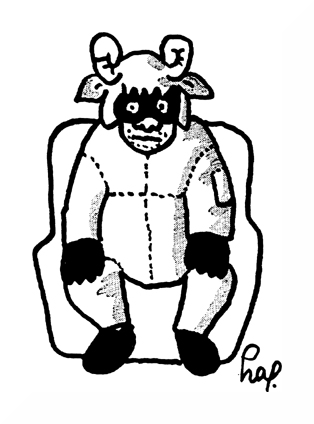And For My Next Act...
I began reading Haruki Murakami somewhere around my sophomore year of college (~2019), starting with his 1994 novel The Wind-Up Bird Chronicle. As I attempt to recollect the first third of the book I’d read, I remember only fragmentary scenes from which no plot emerged. A missing cat. A haunted house. Something about clairvoyance. Like a collage of randomly selected images.
It didn’t take long to lose interest.1
A month ago I was browsing my local Barnes & Noble with money I’d been gifted that Christmas. I’d selected a few works of science fiction–Neuromancer and The Drowned World (both of which I have yet to read)–when I came across a shelf of Murakami’s works. Having given up on Japan’s most celebrated living novelists didn’t sit right with me. I needed redemption; perhaps my approach had been off. I selected A Wild Sheep Chase from the shelf as a new starting point. Written rather early into Murakami’s career, I hoped this novel would serve as a better introduction to his writing style.
A Good First Impression
A simple formula can help us readers arrive at an understanding of the artistic vision of any literary work:
form + content = meaningWhile the content of a novel cannot be appreciated piecemeal, its introduction hints to the form of the novel as a whole. A Wild Sheep Chase begins:
It was a short one-paragraph item in the morning edition. A friend rang me up and read it to me. Nothing special. Something a rookie reporter fresh out of college might’ve written for practice.
The date, a street corner, a person driving a truck, a pedestrian, a casualty, an investigation of possible negligence.
Sounded like one of those poems on the inner flap of a magazine.
“Where’s the funeral?” I asked.
“You got me,” he said. “Did she even have family?”
Murakami uses incomplete sentences three times nearly immediately. His description drives straight to the point, cuts any extraneous details. And his intent is clear: the words on the page are an imitation of the woman’s obituary in the morning paper. We are left with the impression that this woman’s death was unremarkable; her life was of little consequence to anyone but the main character.
This conclusion is reinforced by the observation that the woman is unnamed, and she remains so throughout the book. The narrator admits to having forgotten the woman’s name. He says, “I could pull out the obituary, but what difference would it make now. I’ve forgotten her name.” This narrative choice is enlarged when it’s revealed that the dead woman once had a love affair with the narrator in his youth.
In fact the only named character in the book is the narrator’s cat, Kipper, who receives his name from a chauffeur halfway into the story. Other names are invented by the narrator to serve a descriptive purpose: the Rat, the Boss, the Sheep Professor, the Sheep Man.

The novel takes on a detached tone from the outset. The narrator is a passerby, going through the motions as it were. The bonds he makes with people around him are surface level. He can’t hold a steady romantic relationship even when the effort is almost entirely one-sided. He obsesses over his girlfriend’s ears and seemingly ignores other qualities about her.
I think this passage is exemplary of the “form” this book achieves from the start:
Have I stripped her of her hands and hair and dress? Is the rest of her still living unattached somewhere else? Of course, this can’t be. The world goes on without me. People cross streets through no intervention on my part, sharpen pencils, move fifty yards a minute west to east, fill coffee lounges with music that’s refined into nothingness.
A Second Chance
Having been left with a good first impression, I was carried through the events of the novel much like the narrator. A subject of circumstance.
Murakami utilizes surreal story elements in service of this vision. A mythical, elusive sheep calls the narrator to action on behalf of a shadowy figure. This star-bearing white sheep, we are told, forms a psychic bond with its host, granting immortality for the duration of its stay. Its intentions are inscrutable. And like the narrator, we readers are called to suspend our disbelief.
The book takes a very careful pace towards evermore outlandish claims. Exposition about the mysterious sheep is proceeded by elements of the supernatural: his girlfriend’s “blocked ears”, her premonition of the phone call, the appearance of the biznessman. And these all culminated in the first meeting with the Boss’s right-hand man where we learn about the significance of this sheep.
I think this is why, ultimately, the story told by A Wild Sheep Chase resonated with me more than my first attempt at reading Murakami. The novel–beginning with the mundane circumstances we are all familiar with in some way–gradually gives way to the absurd. This book also mirrors conventional storytelling by presenting the reader with a narrative goal–find the parasitic sheep. Despite the nature of Murakami’s surrealistic writing style, none of the characters in this novel seemed out of place. In comparison to The Wind-Up Bird Chronicle whose main character seemed to forget his investigation of the cat’s disappearance, the narrator here never lost sight of his goal. Each character in A Wild Sheep Chase served a major or minor part in the objective of finding the sheep, if indirectly. My initiation into the story’s surreal elements felt natural and easy.
In all I truly enjoyed the unorthodox storytelling Murakami presents, and I find myself reflecting on its strangeness. Perhaps the next time I visit my local bookstore, I’ll pick up a copy of The Wind-Up Bird Chronicle and give it a second chance.
- ↩
I take extreme care to ensure the reader of this blog does not suffer a similar experience.